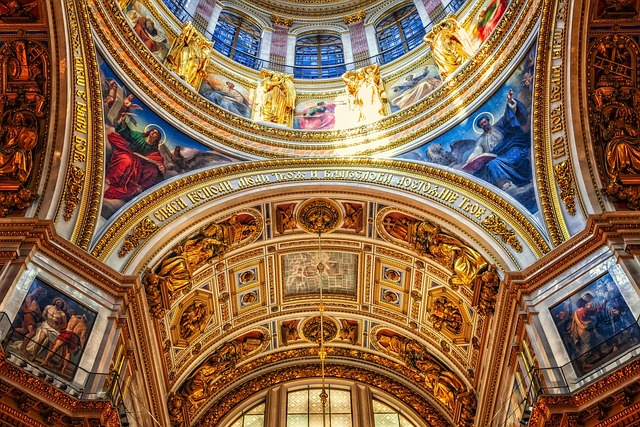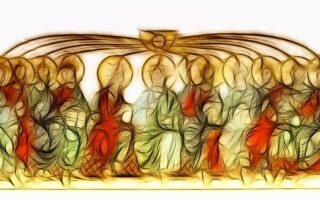Orthodox Christianity, also known as Eastern Orthodox Christianity, is one of the major branches of Christianity. It traces its origins back to the early Christian Church and is characterized by its adherence to the teachings and traditions of the early Church Fathers. With a strong presence in Eastern Europe, the Balkans, and the Middle East, Orthodox Christianity has a distinct theological and liturgical tradition that sets it apart from other Christian denominations. In this introduction, we will explore the key beliefs, practices, and historical development of Orthodox Christianity.
Table of Contents
The History and Origins of Orthodox Christianity
Orthodox Christianity, also known as Eastern Orthodox Christianity, is one of the oldest and most traditional branches of Christianity. Its history and origins can be traced back to the early days of the Christian faith, making it a fascinating subject to explore.
The roots of Orthodox Christianity can be found in the early Christian communities that emerged in the eastern part of the Roman Empire. These communities, located in places like Antioch, Alexandria, and Constantinople, developed their own distinct traditions and practices, which eventually led to the formation of what we now know as Orthodox Christianity.
One of the defining moments in the history of Orthodox Christianity was the Great Schism of 1054. This event marked the formal split between the Eastern Orthodox Church and the Roman Catholic Church, creating two separate branches of Christianity. The reasons for the schism were complex and multifaceted, but they largely revolved around issues of authority, theology, and cultural differences.
Despite the split, Orthodox Christianity continued to flourish in the Byzantine Empire, which was the successor to the Roman Empire in the East. The Byzantine Empire, with its capital in Constantinople, became the center of Orthodox Christian culture and theology. It produced some of the most influential theologians and thinkers in the history of Christianity, such as St. John Chrysostom and St. Gregory Palamas.
Over the centuries, Orthodox Christianity spread beyond the borders of the Byzantine Empire, reaching places like Russia, Serbia, Bulgaria, and Greece. Each region developed its own unique traditions and customs, while still remaining part of the broader Orthodox Christian tradition. This diversity is one of the hallmarks of Orthodox Christianity, as it allows for a rich tapestry of cultural expressions within a shared faith.
Orthodox Christianity places a strong emphasis on tradition and continuity. It sees itself as the guardian of the original teachings and practices of the early Christian Church, preserving them unchanged throughout the centuries. This commitment to tradition is reflected in the liturgy, which is characterized by its solemnity, beauty, and adherence to ancient rituals.
Another important aspect of Orthodox Christianity is its spirituality. Orthodox Christians believe in the transformative power of prayer, fasting, and asceticism. They see these practices as a means of drawing closer to God and attaining union with Him. The monastic tradition, with its emphasis on solitude and contemplation, has played a significant role in shaping Orthodox Christian spirituality.
Today, Orthodox Christianity is practiced by millions of people around the world. It has a strong presence in countries like Russia, Greece, Romania, and Ukraine, but it is also growing in other parts of the world, including North America and Western Europe. Orthodox Christians continue to be guided by the teachings of the early Church Fathers and the decisions of the Ecumenical Councils, which are seen as authoritative sources of doctrine and practice.
In conclusion, the history and origins of Orthodox Christianity are deeply rooted in the early days of the Christian faith. Its development, marked by the Great Schism and the subsequent spread to different regions, has shaped its unique traditions and practices. Today, Orthodox Christianity continues to be a vibrant and influential branch of Christianity, with a strong commitment to tradition and spirituality.
Key Beliefs and Doctrines of Orthodox Christianity

Orthodox Christianity is a branch of Christianity that has its roots in the early days of the church. It is known for its rich history, deep spirituality, and adherence to traditional beliefs and practices. In this article, we will explore some of the key beliefs and doctrines of Orthodox Christianity.
One of the central beliefs of Orthodox Christianity is the belief in the Holy Trinity. Orthodox Christians believe in one God who exists in three persons: the Father, the Son (Jesus Christ), and the Holy Spirit. This belief is based on the teachings of the Bible and has been affirmed by various church councils throughout history.
Another important belief in Orthodox Christianity is the belief in the Incarnation. Orthodox Christians believe that Jesus Christ, the Son of God, became fully human while still remaining fully divine. This belief is central to the Orthodox understanding of salvation and the role of Jesus Christ as the savior of humanity.
Orthodox Christians also place a strong emphasis on the sacraments. The sacraments are seen as visible signs of God’s grace and are believed to convey that grace to the believer. The most important sacraments in Orthodox Christianity are baptism and the Eucharist. Baptism is seen as the initiation into the Christian faith, while the Eucharist is seen as the central act of worship and a participation in the body and blood of Christ.
In addition to these key beliefs, Orthodox Christianity also has a rich tradition of prayer and spirituality. Orthodox Christians believe in the importance of personal prayer and seek to cultivate a deep and intimate relationship with God. They also place a strong emphasis on the role of the saints and the Virgin Mary as intercessors and examples of holiness.
Orthodox Christianity also has a strong sense of tradition and continuity. Orthodox Christians believe that the church is the body of Christ and that it has been guided by the Holy Spirit throughout history. They look to the early church fathers and the decisions of the ecumenical councils as authoritative sources of doctrine and practice.
While Orthodox Christianity shares many beliefs and practices with other branches of Christianity, it also has some distinct features that set it apart. For example, Orthodox Christians place a strong emphasis on the use of icons in worship. Icons are seen as windows into the heavenly realm and are used as aids to prayer and meditation.
In conclusion, Orthodox Christianity is a branch of Christianity that has its own unique set of beliefs and practices. It is characterized by its belief in the Holy Trinity, the Incarnation, and the importance of the sacraments. It also places a strong emphasis on prayer, spirituality, tradition, and the use of icons. While Orthodox Christianity shares many beliefs with other branches of Christianity, it also has its own distinct identity and rich history.
The Role of Icons and Symbolism in Orthodox Christian Worship
Are Orthodox Christian?
Orthodox Christianity is a branch of Christianity that has a rich history and a unique set of beliefs and practices. One of the most distinctive aspects of Orthodox Christian worship is the use of icons and symbolism. Icons are sacred images that are used as a means of connecting with the divine and are an integral part of Orthodox Christian worship.
In Orthodox Christian churches, you will find icons adorning the walls and iconostasis, a screen or wall of icons that separates the sanctuary from the nave. These icons depict various saints, biblical scenes, and events from the life of Christ. They serve as a visual representation of the spiritual reality and are believed to be windows into the heavenly realm.
The use of icons in Orthodox Christian worship dates back to the early centuries of Christianity. It is rooted in the belief that God became incarnate in Jesus Christ, taking on human flesh and becoming visible to us. Icons are seen as a continuation of this incarnation, making the divine presence tangible and accessible to believers.
Icons are not worshipped in Orthodox Christianity, but they are venerated. Veneration is a form of respect and honor given to the saints and the events depicted in the icons. It is a way of acknowledging the spiritual reality that the icons represent and seeking their intercession and blessings.
When Orthodox Christians venerate an icon, they may kiss it, make the sign of the cross, or bow before it. These actions are not directed towards the physical object itself, but towards the spiritual reality it represents. It is a way of expressing love, devotion, and reverence for the saints and the divine presence they embody.
Symbolism is also an important aspect of Orthodox Christian worship. Everything in the church, from the architecture to the liturgical objects, is filled with symbolic meaning. For example, the dome of an Orthodox church represents heaven, while the altar symbolizes the heavenly throne. The use of incense during worship represents the prayers of the faithful rising to heaven.
The use of symbolism in Orthodox Christian worship serves to deepen the spiritual experience and create a sense of awe and reverence. It helps to transport believers from the physical realm to the spiritual realm, allowing them to connect with the divine in a profound way.
Icons and symbolism are not just limited to the physical space of the church. They are also present in the daily lives of Orthodox Christians. Many Orthodox homes have a prayer corner or icon corner, where icons are displayed and prayers are offered. This serves as a reminder of the spiritual reality and a focal point for personal devotion and prayer.
In conclusion, icons and symbolism play a significant role in Orthodox Christian worship. They are not worshipped, but venerated as a means of connecting with the divine. Icons serve as windows into the heavenly realm, while symbolism helps to deepen the spiritual experience. Whether in the church or in the home, icons and symbolism are a constant reminder of the spiritual reality and a source of inspiration and devotion for Orthodox Christians.
Orthodox Christian Traditions and Practices: A Closer Look
Are Orthodox Christian?
Orthodox Christian traditions and practices have a rich history that dates back to the early days of Christianity. With their unique customs and beliefs, Orthodox Christians have managed to preserve their faith and pass it down through generations. In this article, we will take a closer look at some of the key traditions and practices that define Orthodox Christianity.
One of the most distinctive aspects of Orthodox Christian worship is the use of icons. Icons are religious images that are believed to be windows into the divine. They are not worshipped as idols, but rather venerated as a means of connecting with the spiritual realm. Icons can be found in Orthodox churches, homes, and even worn as jewelry. They serve as a constant reminder of the presence of God and the saints.
Another important tradition in Orthodox Christianity is the use of incense during worship. The burning of incense is seen as a way to purify the air and create a sacred atmosphere. The sweet aroma is believed to carry prayers to heaven and symbolize the presence of the Holy Spirit. The use of incense adds a sensory element to the worship experience, engaging both the mind and the body.
Orthodox Christians also place a strong emphasis on fasting. Fasting is seen as a way to discipline the body and focus the mind on spiritual matters. The Orthodox Church has specific fasting periods throughout the year, such as Lent and Advent, during which believers abstain from certain foods and engage in prayer and reflection. Fasting is not just about abstaining from food, but also about cultivating self-control and humility.
In addition to these practices, Orthodox Christians have a deep reverence for the sacraments. The sacraments are seen as tangible signs of God’s grace and presence in the world. Baptism, Chrismation, and the Eucharist are considered the three primary sacraments, with each playing a significant role in the spiritual journey of a believer. Through these sacraments, Orthodox Christians believe they are united with Christ and receive the forgiveness of sins.
Orthodox Christian worship is also characterized by its liturgical nature. The liturgy is a structured form of worship that follows a set order and includes prayers, hymns, and readings from the Bible. The liturgy is designed to engage all the senses and involve the entire congregation in the worship experience. It is a communal act of worship that connects believers with the larger body of Christ.
While these traditions and practices are central to Orthodox Christianity, it is important to note that not all Orthodox Christians may adhere to them in the same way. There is a diversity of practices within the Orthodox Church, influenced by cultural, regional, and personal factors. However, the core beliefs and teachings of Orthodox Christianity remain the same, providing a strong foundation for believers to connect with God and live out their faith.
In conclusion, Orthodox Christian traditions and practices are an integral part of the faith. From the use of icons and incense to fasting and sacraments, these practices help believers connect with God and deepen their spiritual journey. The liturgical nature of Orthodox worship creates a sense of unity and community among believers. While there may be variations in how these traditions are observed, the core beliefs of Orthodox Christianity remain constant. So, are you Orthodox Christian? It’s not just about the practices, but about the heart and commitment to the faith.
Conclusion
In conclusion, Orthodox Christianity is a branch of Christianity that follows the teachings and traditions of the early Christian Church. It is characterized by its emphasis on liturgical worship, sacraments, and the authority of the bishops. Orthodox Christians believe in the Holy Trinity, the divinity of Jesus Christ, and the importance of salvation through faith and good works. The Orthodox Church has a rich history and continues to be practiced by millions of believers worldwide.
For licensing reasons, we must provide the following notice: This content was created in part with the help of an AI.


